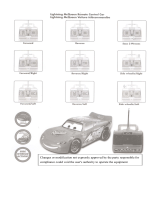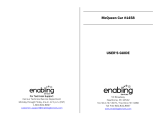
E-A-R 01-16/HP, Does ANR make sense? Page - 8
simply being implemented for additional noise reduction, but is also important for optimizing speech and
signal transmission in high-level low-frequency dominated noises. A companion paper by D. Gauger
describes those situations, and the concomitant benefits of ANR in great detail (Gauger, 2002).
Finally, let’s return to a comment raised in the abstract, namely the dramatic auditory benefit one
perceives when switching on and off an ANR system in a low-frequency dominated noise. A large benefit
is heard because one is comparing the effect of attenuation values represented by the ANR-off and ANR-
on curves in Figure 2. However, as was discussed at the top of page 3 the mere act of equipping an
earmuff cup with ANR components degrades its performance, which if the ANR is to be useful, must be
more than offset by the electronic circuitry. Therefore a fair comparison of the auditory merits of ANR is
to compare the sound of a similar-sized conventional earmuff (which of course lacks those components)
to the ANR-on condition, as shown by the conventional earmuff vs. ANR-on curves in the same figure.
Clearly much less of a difference is perceived in this situation, especially if the noise had any important
audible contributions above 250 Hz. This latter type of demonstration can only be effectively
accomplished by creating a pre-recorded auditory demonstration in which sample noise spectra are
filtered to simulate the attenuation provided by the two conditions.
So when you take an ANR earmuff for a “test drive” you may enjoy the experience of switching it on and
off and hearing the low-frequency energy disappear, but don’t be fooled, the actual benefits compared to
conventional earmuffs are much less spectacular.
REFERENCES
1. Backshall, D. (2000). Personal communication of previously unpublished data.
2. Berger, E. H. (2000). “Proposal for a Grading Scheme for CSA Standard Z94.2, Hearing Protectors, “ E-A-R Technical
Rept. E-A-R 00-22/HP, Indianapolis, IN.
3. Berger, E. H. and Kerivan, J. E. (1983). "Influence of Physiological Noise and the Occlusion Effect on the
Measurement of Real-Ear Attenuation at Threshold," J. Acoust. Soc. Am. 74(1), 81-94.
4. Casali, J. G. and Berger, E. H. (1996). "Technology Advancements in Hearing Protection Circa 1995: Active Noise
Reduction, Frequency/Amplitude-Sensitivity, and Uniform Attenuation," Am. Ind. Hyg. Assoc. J. 57(2), 175-185.
5. Gauger, D. (2002). “Active Noise Reduction (ANR) and Hearing Protection: Where It’s Appropriate and Why,”
Spectrum Suppl. 1, 19.
6. Gauger, D. and Sapiejewski, R. S. (1999). "ANR Headphones: Past and Present," Spectrum Suppl. 1, 16, p. 23.
7. Johnson, D. L. and Nixon, C. W. (1974). "Simplified Methods for Estimating Hearing Protector Performance," Sound
and Vibration 8(6), 20-27.
8. Karplus, H. B. and Bonvallet, G. L. (1953). "A Noise Survey of Manufacturing Industries," Ind. Hyg. Qtrly., December,
235-263.
9. Kroes, P., Fleming, R., and Lempert, B. (1975). "List of Personal Hearing Protectors and Attenuation Data," National
Institute for Occupational Safety and Health, U.S. Dept. of HEW, Rept. No. 76-120, Cincinnati, OH.
10. McQueen, G. H., Cameron, A. J., King, R. B., Mannam, J., Reilly, R. N., Stafford, R. G., and Wilson, K. J. (1969).
"Good Health," Occup. Health Branch, Dept. of Public Health, Adelaide, Australia.
11. Nixon, C. W. and McKinley, R. L. (1992). "What Can Active Noise Reduction Headsets Do for You?," in Proceedings,
Hearing Conservation Conference, Off. Eng. Serv., Univ. Kentucky, Lexington, KY, 107-110.
12. OSHA (1981). "Occupational Noise Exposure; Hearing Conservation Amendment," Occupational Safety and Health
Administration, 29CFR1910.95 Fed. Regist. 46(11), 4078-4181.













